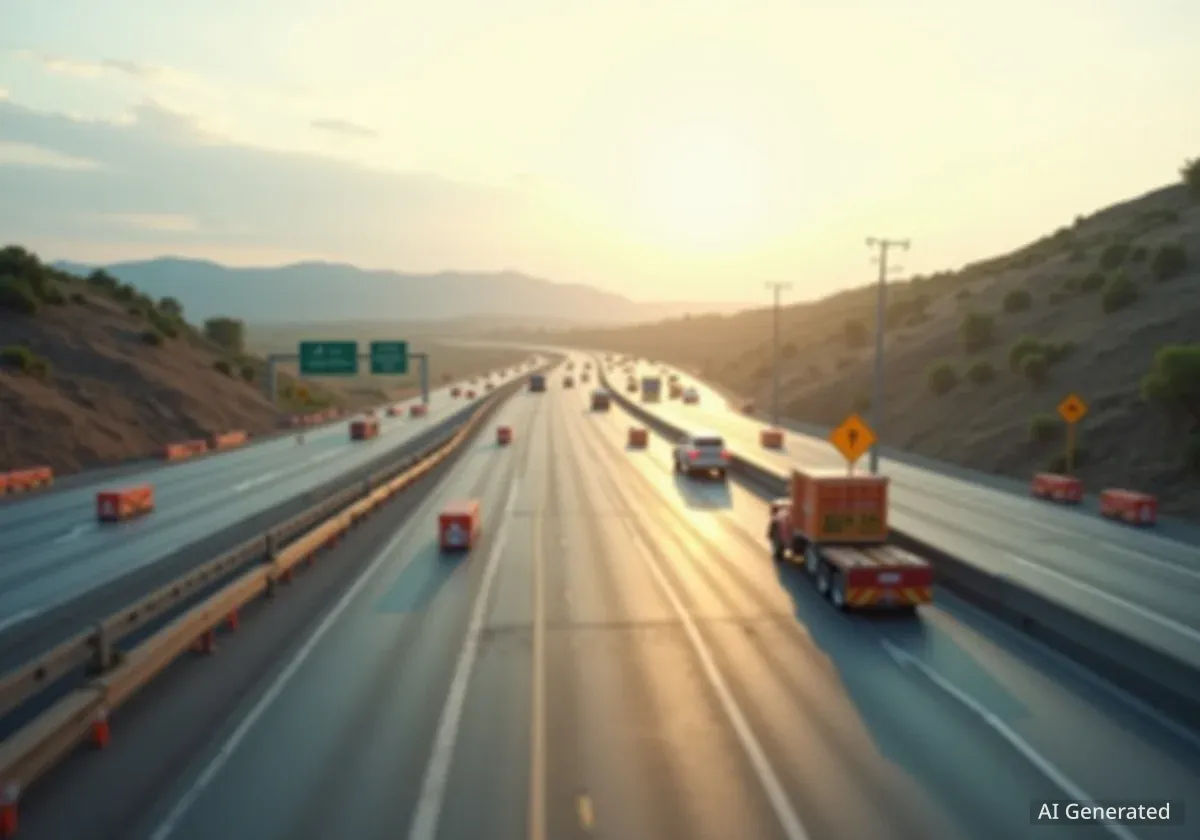All lanes of southbound I-35 in Oklahoma City have reopened after a significant crash earlier this morning. The incident, which occurred between S.E. 89th Street and S.E. 27th Street, caused major traffic delays for several hours, impacting morning commuters.
Key Takeaways
- Southbound I-35 lanes between S.E. 89th St. and S.E. 27th St. are now fully open.
- The crash caused extensive closures and traffic disruption during peak morning hours.
- Authorities advised drivers to seek alternate routes to avoid the affected area.
Morning Commute Disrupted by I-35 Closure
Early on November 1, 2025, a crash forced the complete closure of southbound Interstate 35 in Oklahoma City. The affected stretch ran from S.E. 89th Street north to S.E. 27th Street. This closure created significant challenges for drivers attempting to navigate the city during the morning rush.
Emergency services responded quickly to the scene. Details regarding the nature of the crash and any potential injuries remain limited as investigations are likely ongoing. However, the immediate priority was clearing the roadway to restore traffic flow.
Traffic Alert Timeline
- 08:01 AM CDT: Initial report of southbound I-35 closure.
- 08:54 AM CDT: Update confirms all southbound lanes are reopened.
- 09:12 AM CDT: Final update on traffic conditions, confirming full clearance.
Impact on Local Drivers and Alternate Routes
The closure of such a vital artery as I-35 southbound had a cascading effect on local roads. Many drivers were forced to find alternative routes, leading to increased congestion on parallel streets and highways. This often extends commute times significantly.
Authorities advised motorists to avoid the area entirely and plan their journeys using different roads. This guidance was crucial in preventing further gridlock and allowing emergency vehicles clear access to the crash site.
Understanding I-35's Importance
Interstate 35 is a major north-south corridor that runs through the heart of Oklahoma City. It connects residential areas to business districts and serves as a critical route for both local commuters and interstate travelers. Disruptions on I-35 can have widespread effects on regional transportation.
Swift Response and Roadway Clearance
The rapid reopening of the lanes highlights the efficiency of local emergency responders and traffic management teams. Within approximately one hour of the initial report, all southbound lanes were accessible again. This minimized the prolonged impact on thousands of daily commuters.
Such swift action is critical in metropolitan areas where even short-term closures can lead to extensive delays and economic disruption. The coordination between police, fire, and transportation departments plays a vital role in these situations.
“Our primary goal during any incident on a major highway is the safety of the public and the swift restoration of traffic flow,” a local traffic official stated, emphasizing the coordinated efforts involved.
Ongoing Investigations and Future Traffic Management
While the lanes are open, the investigation into the cause of the crash will continue. This typically involves examining vehicle damage, interviewing witnesses, and reviewing any available surveillance footage. The findings can help inform future traffic safety measures.
Local transportation departments constantly monitor traffic patterns and incident responses to identify areas for improvement. This includes evaluating signage, road design, and emergency protocols to enhance safety and reduce the impact of future incidents on major roadways like I-35.
Drivers are always encouraged to stay informed about local traffic conditions, especially during peak travel times. Using traffic apps and local news alerts can help commuters plan for unexpected delays and choose the most efficient routes.
- Always check for traffic updates before starting your commute.
- Maintain a safe following distance, especially in congested areas.
- Be aware of emergency vehicle activity and follow their instructions.
The incident serves as a reminder of the dynamic nature of urban traffic and the importance of prepared emergency responses to keep city arteries functioning.





